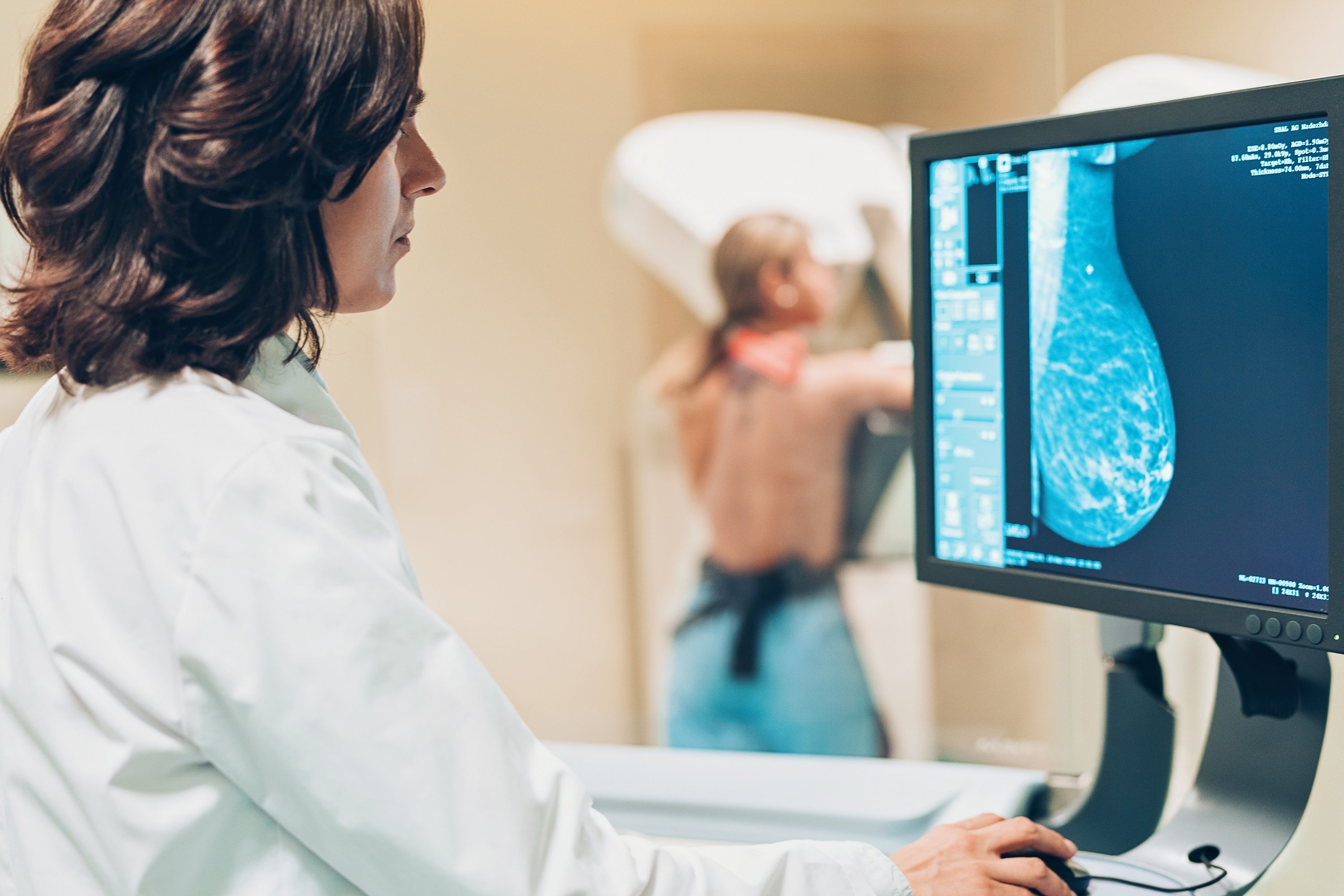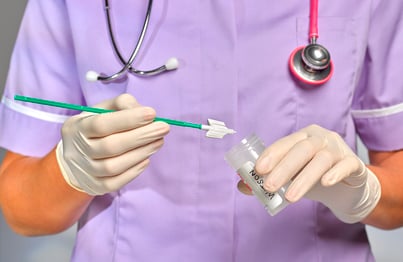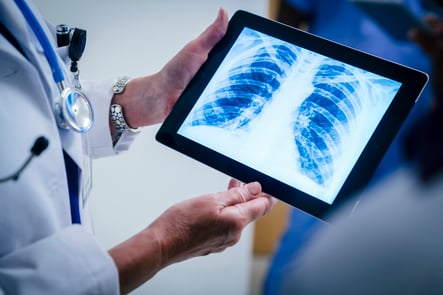Next Steps After You Receive Abnormal Test Results
6 min read

For cancer screening results, the word “abnormal” means there were unexpected changes that are out of normal reference range of a testing. These kind of results don’t necessarily mean you have cancer. In some cases, physicians can provide more explanation and result interpretation to provide reassurance. In other cases, additional tests may be needed if you’ve been screened for one of the four most common cancers: breast, cervical, colorectal, and lung cancers.
If you’ve gotten an abnormal test result from a cancer screening, here are a few things to keep in mind, depending on the type of screening you’ve had.
Breast Cancer
Breast cancer screenings generally involve an annual mammogram in standard-risk patients. Many women receive abnormal results after a mammogram, but you may not need to worry. According to the American Cancer Society, fewer than 10% of women who get a callback are diagnosed with breast cancer.
You may get called back after your mammogram screening test results for the following reasons:
- The picture may not be clear enough to get a good reading.
- The radiologist might see something different than the rest of the breast tissue.
- The radiologist might see some abnormal areas that look suspicious, such as a cyst or a mass.
- You have dense breasts, which affect how clear your breast tissue appears on a mammogram.
You will probably need a diagnostic mammogram if you have an abnormal mammogram. This test takes additional images of the area of concern so radiologists can get a better look. Your healthcare provider may also order an ultrasound or a breast MRI.
After you have additional diagnostic tests, your provider may refer you to a specialist for a biopsy to rule out breast cancer.
Rocky Mountain Breast Specialists (RMBS) offers the following breast biopsies:
 Core biopsy, which removes a breast tissue sample with a wide needle
Core biopsy, which removes a breast tissue sample with a wide needle- Fine-needle aspiration, which removes cells or fluid from the lump in the breast with a thin needle
- Skin biopsy, which removes a skin sample from the breast if you have skin changes
- Surgical biopsy, which removes a tissue sample from the lump or abnormal areas
Cervical Cancer
A cervical cancer screening involves a Pap smear, a human papillomavirus (HPV) test, or both.
An abnormal Pap smear result means there are changes in the cells of your cervix, but it doesn’t necessarily mean you have cancer.
According to the National Cancer Institute, it can take many years for abnormal cervical cells to turn into cancer. Some minor changes in your cells can even go back to normal on their own. You can also receive an unclear result from your Pap smear, which means the cervical cells may be abnormal – or they may not.
HPV tests come back either positive or negative. If your HPV test result is positive, it means you have an infection that could potentially cause a risk of tissue from the cervix turning cancerous. It doesn’t mean you have cervical cancer right now. Oftentimes, HPV can resolve spontaneously.
If you have abnormal Pap smear results, your healthcare provider will need additional testing to rule out cervical cancer. You may need a colposcopy, a procedure that magnifies areas of the cervix so your provider can look for abnormal areas. If abnormalities are identified, you may need a cervical biopsy. RMCC offers the following cervical biopsies:
- Conization, which removes a section of tissue from the cervix with a scalpel
- Endocervical curettage, which scrapes tissue off the cervix with a curette, a small tool that looks like a spoon
- Loop electrosurgical excision procedure (LEEP), which removes cervical tissue with a thin wire loop that has a small electrical current
- Punch biopsy, which pinches of a small tissue sample with a sharp tool
Colorectal Cancer
Colorectal cancer can be detected in a few different ways, but the gold standard is a colonoscopy. Your healthcare provider might also test stool samples, use a flexible sigmoidoscopy that checks the lower third of the colon, or use a CT colonography that takes X-rays images of the colon. If you receive an abnormal result from any of these alternative screenings, you will need to follow up with your healthcare provider to have a colonoscopy, in which a doctor uses a thin, flexible tool to guide a small camera through the length of your colon. The tool also has devices that can remove small growths called polyps for testing.
There are different types of polyps:
- Adenomatous polyps, which can sometimes be precancerous
- Hyperplastic and inflammatory polyps, which are typically not cancerous
- Sessile serrated polyps and traditional serrated adenomas, which have a higher risk of being cancerous
Lung Cancer
Lung cancer screenings involve a low-dose CT scan. Lung cancer typically forms a lung nodule, or abnormal tissue in the lung that can be detected with a CT scan. A lung nodule doesn’t necessarily mean you have lung cancer. According to the Radiological Society of North America, over 95% of lung nodules aren’t cancerous – but they can cause scars.
If your lung cancer screening comes back abnormal, your provider may order additional tests to help rule out lung cancer:
 Bronchoscopy, which uses a thin tube to look in the trachea and lungs for abnormalities
Bronchoscopy, which uses a thin tube to look in the trachea and lungs for abnormalities- Chest X-ray
- Endoscopic ultrasound, which uses sound waves to take pictures of the lung
- Fine-needle aspiration biopsy, which removes a sample of the abnormal tissue with a needle
- MRI, which produces images of your lungs using radio waves and a large magnet
- Positron emission tomography (PET) scan, which uses radioactive materials to find tumor cells in the body
- Radionuclide bone scan, which checks for cancer cells in the bone
- Sputum cytology, which checks your mucus for cancer cells
- Thoracoscopy, which uses a thin instrument inserted between the ribs to check for abnormal areas or take a biopsy
- Thoracentesis, which removes fluid from the space between the chest and lungs to check for cancer cells
What to Do If You Receive Abnormal Cancer Screening Results
If you get called back after a cancer screening, stay calm and remind yourself that an abnormal result doesn’t mean you have cancer. It may help to talk with a friend or family member. You might also want to try some self-care activities, such as:
- Avoiding alcohol and tobacco
- Deep breathing
- Eating a healthy diet that includes fruits, vegetables, lean protein sources, whole grains, and low-fat or fat-free dairy
- Exercising
- Getting plenty of sleep, which means seven to nine hours a night for adults
- Mindfulness and meditation
Try to find activities that can help you relax and take your mind off the abnormal results. Also, be sure to stay connected with your community, friends, and family.
The medical oncologists at RMCC provide quality cancer care and develop treatment options that are best for you. Learn about the sophisticated cancer treatments we offer at locations across the Front Range.